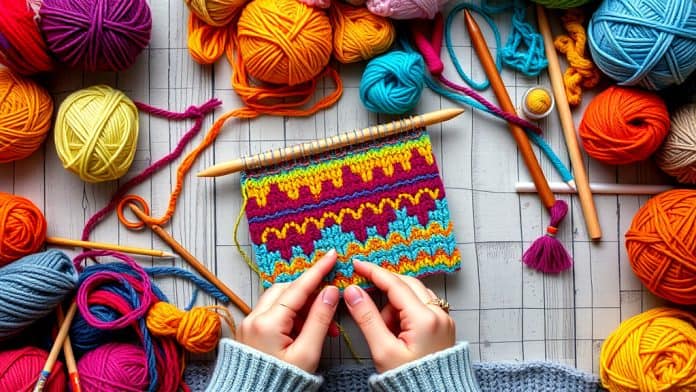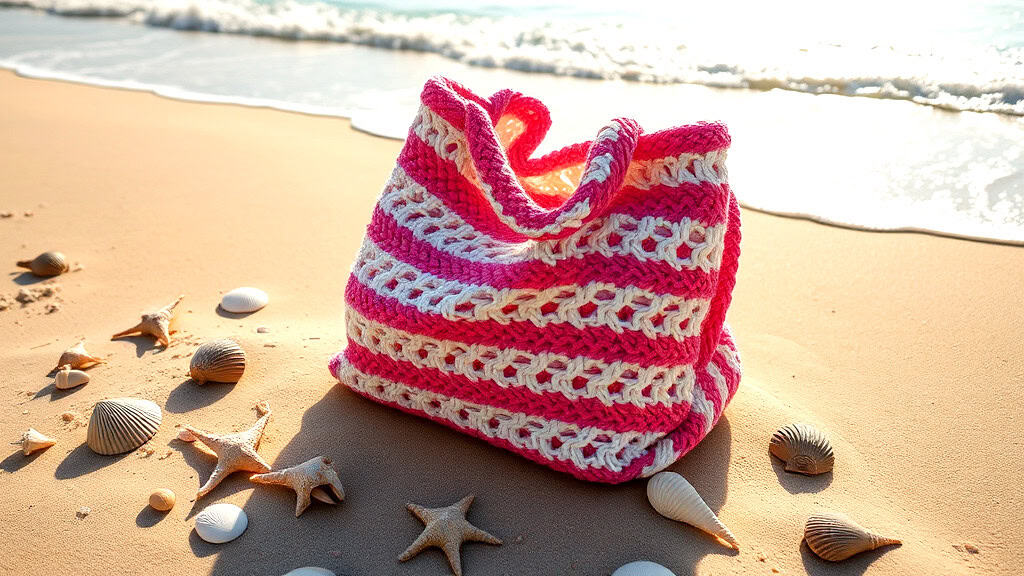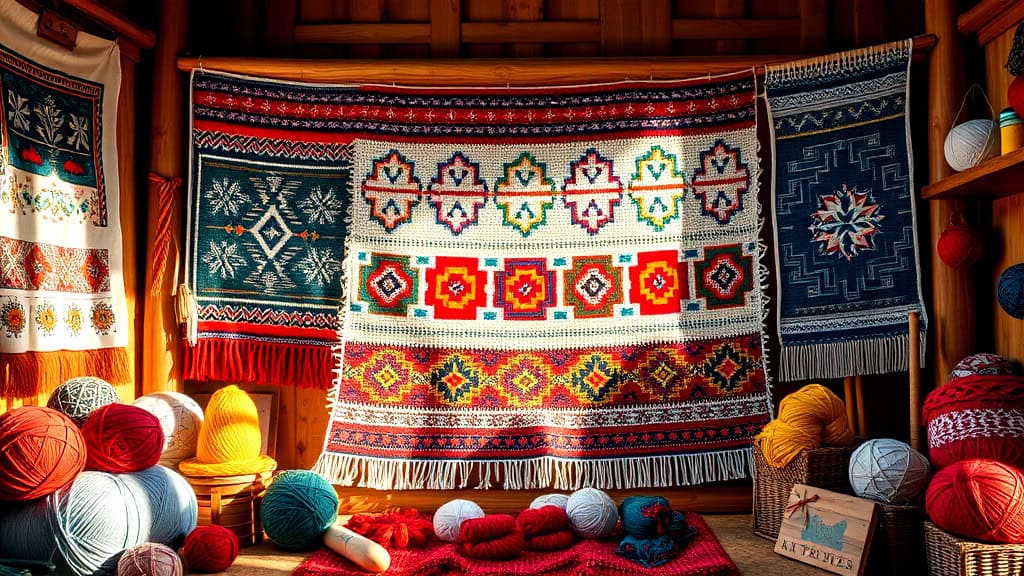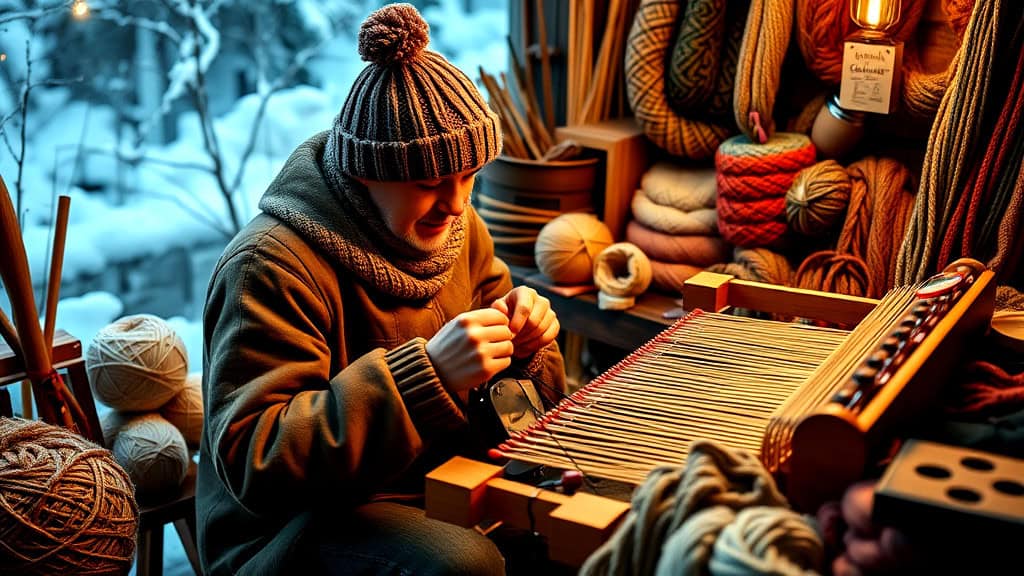2 Color Slip Stitch Knitting Patterns
Diving into the colorful and textured universe of 2 Color Slip Stitch Knitting Patterns can transform your knitting projects from simple to spectacular. When you choose your yarns, mixing a pastel mixed hue with a bolder shade can make those patterns pop. It’s all about the dance between your main and secondary colors, creating a visual feast that’s hard to look away from.
Slipping a stitch isn’t just about moving it from one needle to the next; it’s an art. Whether you slip purlwise to keep your fabric smooth or juggle the working yarn between front and back, each technique brings its own flavor to the table. And if you’re aiming for a cozy texture, nothing beats the garter slip stitch for snuggle-worthy projects.
For those new to this game, simple slipped stitch projects are your best friends. They’re like the gateway into the vast, vivid worlds of slipped stitch color and stitch color knitting. But remember, the magic lies in how you work slipped stitch—it’s the secret ingredient to turning ordinary yarn into extraordinary pieces.
So grab your needles, pick your palette, and let’s get stitching. With a bit of practice and patience, you’ll be weaving slip stitch wonders in no time, turning heads with your stunning, intricate creations. Whether it’s a scarf that tells a story or a hat that sings a song, your slipped stitch patterns will speak volumes.
Key Takeaways
When you mix a pastel mixed shade with a bold color, your slipped stitch patterns will truly stand out. It’s a game of lights and shadows that makes your knitting work shine.
Choosing the right yarn is a big deal. Think of it as picking your painting palette. Solid and variegated yarns can be best buddies or arch-enemies in your project. Make sure they’re of similar weight to avoid a bumpy ride in texture land.
Now, let’s talk about how to slip a stitch. It’s not rocket science, but there’s a trick to it. Slip stitches purlwise to keep your fabric looking tidy and avoid twists. Depending on where you place your working yarn, you can create different effects. Behind the work stretches the stitch a bit, in front makes a neat bar across.
Did anyone say garter slip stitch? Yes, please! It’s like the comfort food of knitting stitches. Perfect for those cozy projects where you want texture without the fuss.
For those who are just starting, simple slipped stitch projects are your new best friends. They’re the stepping stones to the colorful and intricate universe of stitch color knitting. And remember, the magic is in how you work slipped stitch. It’s what turns a simple yarn into a masterpiece.
Here are a couple of tips to keep in your knitting bag:
- Start with patterns that won’t make you pull your hair out. Slow and steady wins the race.
- Colors matter. Choose ones that complement each other and make your pattern pop.
- Swatch, swatch, swatch. It’s like a rehearsal for your big knitting project.
- Keep that yarn tension in check. Too tight or too loose, and your fabric might warp.
- Got a complex pattern? Break it down. Follow the instructions and charts to the letter.
Remember, every stitch counts. Whether you’re aiming for a scarf that’s a conversation starter or a hat that’s a head-turner, it’s all about patience and practice. So, grab those needles, pick your colors, and let the dance between stitches begin.
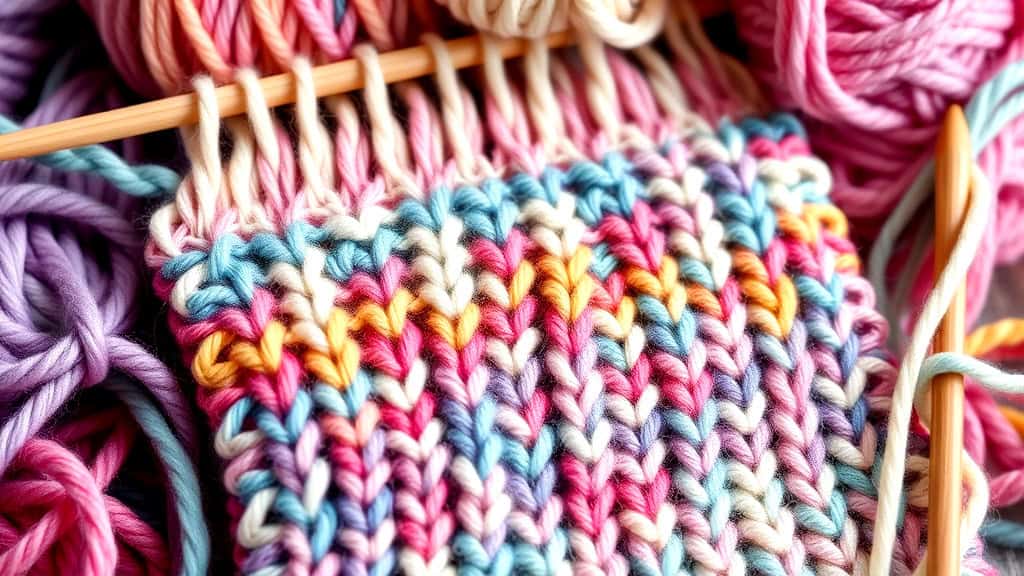
Choosing Yarn and Colors for Patterns
When selecting yarn and hues for your 2 color slip stitch knitting patterns, the adventure truly begins. Opting for solid and variegated yarns can be like unlocking a secret door to striking designs. Yet, tread lightly with variegated options to avoid unexpected splotches. Matching yarn weights is a golden rule to maintain a uniform texture throughout your creation. Why not take a yarn for a test drive? Crafting swatches can reveal how different fibers play together.
Choosing colors is akin to setting the stage for a show. A lighter main color beside a darker secondary can make your slipped stitches pop like stars in the night sky. For those embarking on simple slipped stitch projects, contrast is your best friend. It highlights the delicate dance between colors, transforming your fabric into a visual delight.
Here’s a handy table to guide you through the process:
| Yarn Type | Color Type | Project Example |
|---|---|---|
| Solid | Main | Beanie |
| Variegated | Secondary | Scarf |
| Solid | Secondary | Sweater |
| Variegated | Main | Mittens |
| Solid | Both | Socks |
Remember, slipped stitch color knitting is not just about following patterns; it’s about making them your own. So, pick up those needles, choose your palette, and let your creativity flow.
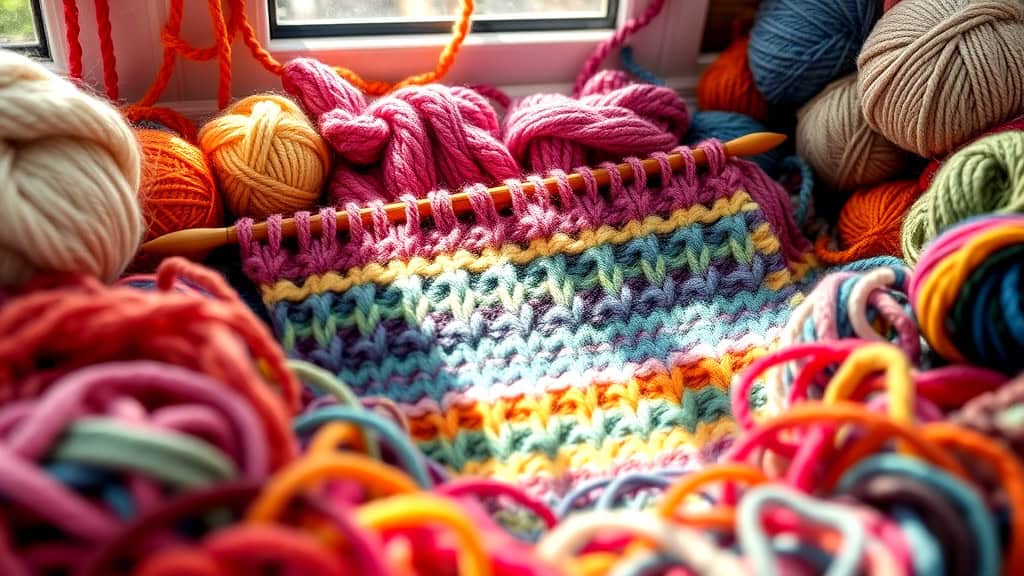
Techniques to Slip a Stitch Correctly
Mastering the art of slipping stitches correctly is a game-changer in creating 2 Color Slip Stitch Knitting Patterns. This technique enriches the texture and depth of your knitting projects, turning simple pieces into eye-catching creations. When you slip a stitch, it’s like you’re whispering a secret to your yarn, telling it to wait its turn, creating a subtle yet striking visual effect.
- Always slip stitches purlwise to maintain their orientation and prevent twisting. This ensures your fabric has a smooth, uniform texture that’s visually appealing.
- Keep the working yarn either in the front or back, depending on the desired effect. Placing it in back stretches the stitch, adding length, whereas in front, it forms a neat horizontal bar across the stitches.
- Use contrasting colors for a vivid display of the slipped stitch effect. Think of using a light pastel mixed with a deeper hue to make the pattern pop.
- Swatches are your best friends. Before committing to a project, knit a small test piece to see how the colors play together and how the fabric feels.
- Tension is your secret weapon. Too tight, and the fabric puckers; too loose, and it looks sloppy. Find that happy medium for a fabric that’s just right.
By following these steps, your venture into slipped stitch patterns will not only be successful but thoroughly enjoyable. Let your needles dance between colors, crafting patterns that speak volumes of your skill and creativity.
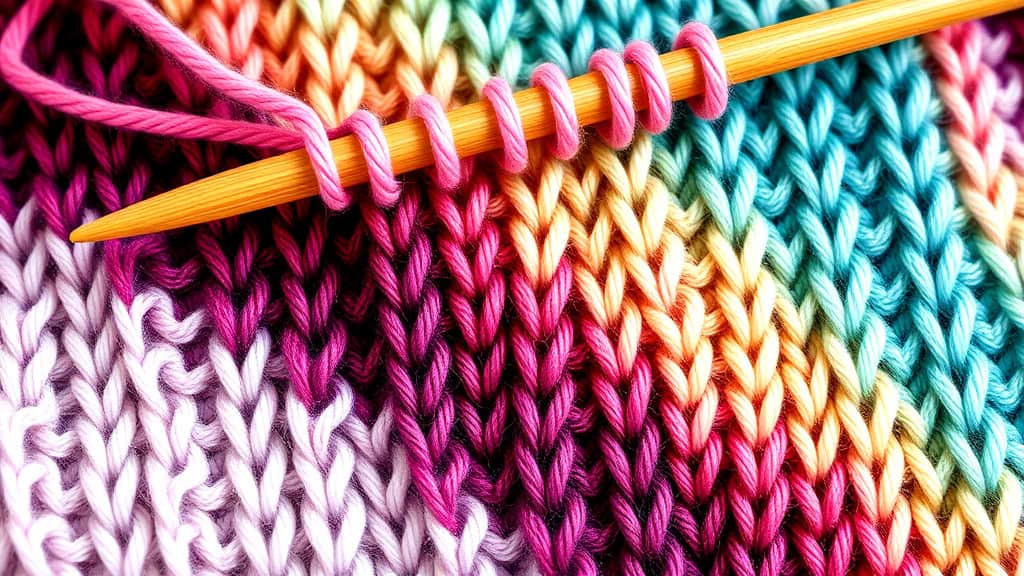
Reading and Following Stitch Patterns
When trying to interpret and execute 2 Color Slip Stitch Knitting Patterns, it’s all about getting comfortable with the basics and then branching out. For those who’ve dabbled in knitting before, you know every pattern speaks its own language. With slipped stitches, you’re playing with two hues to create depth and texture without the need for advanced techniques.
To slip a stitch correctly, always aim to move it purlwise. This keeps the loop looking neat and avoids twisting that might otherwise distort your fabric. Where you position the working yarn will affect the outcome: behind for a stretched stitch or in front for a decorative bar across your work. If you’re aiming for a simple slipped stitch look, contrasting colors can make your design stand out dramatically. Think of combining a soft pastel mixed with a bold, dark shade for maximum impact.
The beauty of slipped stitch color work lies in its simplicity and the stunning effects you can achieve. For beginners, it’s advisable to stick to patterns that don’t overwhelm with too many color changes or technical steps.
Here’s a quick guide for getting started:
- Yarn Choice: Pick yarns of similar weight but contrasting colors.
- Needles: Match them to the weight of your secondary yarn.
- Practice: Make swatches to see how colors interact.
- Tension: Keep it even for a smooth fabric.
Knitting with two colors opens up a new dimension in your crafting adventures. Enjoy the ride as you blend shades and textures!

Creating Texture and Color Patterns
Creating interesting designs with 2 color slip stitch knitting patterns offers a blend of texture and color that can make your projects pop. Choosing the right yarns plays a critical part; mix solid with variegated yarns for eye-catching results. Variegated yarns add surprise twists but avoid too much patchiness. Keep yarn weights similar for uniformity in your fabric.
Slip the stitch purlwise to maintain an un-twisted, smooth appearance. Where you place the working yarn greatly influences the texture—behind for a stretched stitch, or in front for a neat horizontal bar. Correct needle size is your friend here, helping you match the yarn weight and achieve the fabric feel you desire.
Navigating slipped stitch patterns is less intimidating than it might seem. Get cozy with terms like “SL” (slip) and “wyib” (with yarn in back). Charts are your visual aids, making complex patterns easier to follow. Always read these from right to left, and keep an eye on those repeats for a flawless finish.
Here are quick tips for anyone starting with slip stitch knitting:
- Begin with straightforward designs to get a grip on slipping stitches.
- Pick contrasting hues for a striking effect.
- Swatch to experiment how yarns play together.
- Watch your tension to avoid pulled or baggy fabric.
- Lean on detailed guides and charts to conquer intricate designs.
For further inspiration, a certain blog showcases the beauty of these patterns with stunning visuals here.
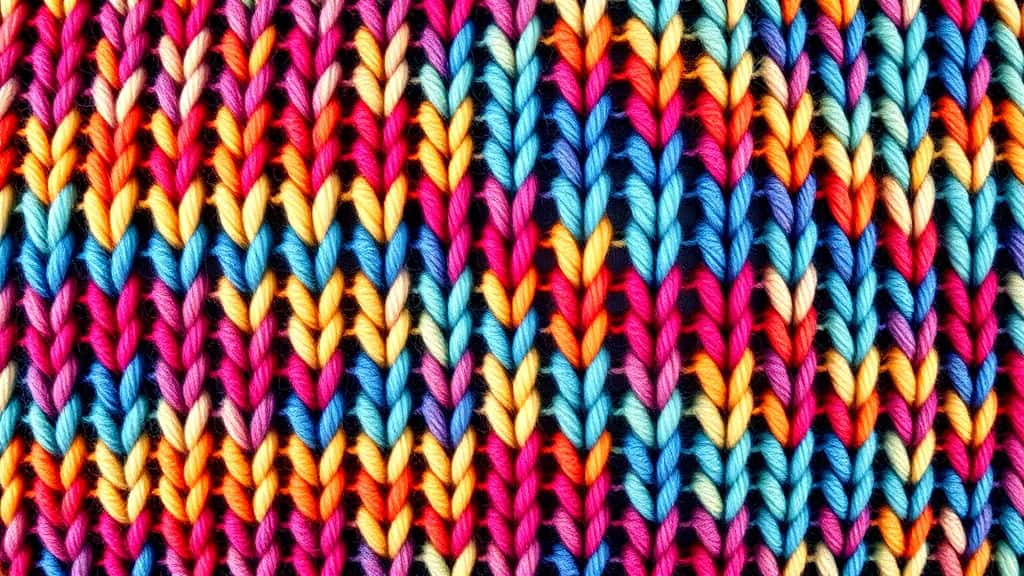
Five Tips for Beginners in Slip Stitch Knitting
For those just dipping their toes into the colorful pool of 2 Color Slip Stitch Knitting Patterns, here are five savvy tips to make your crafting adventure as smooth as knitting with butter.
- Choosing yarns that play well together is your ticket to a stunning project. Solid and variegated yarns can dance beautifully in a slip stitch project, but keep an eye on the contrast to make those patterns pop.
- When it comes to moving stitches from one needle to another, slipping purlwise is the golden rule to prevent twisted stitches. Remember, the position of your working yarn—either in front or behind—can dramatically change the texture and appearance of your fabric.
- Charts are your best friend for visualizing the dance of colors and stitches. Even if they seem like a cryptic code at the start, with a bit of practice, they’ll guide you to creating complex-looking fabric that’s actually easy to achieve.
- Experimentation leads to perfection. Don’t be afraid to knit small swatches to see how different color combinations and yarn types interact with each other. It’s like a rehearsal before the main performance.
- Keeping an even tension is more than just a good practice; it’s a necessity. Too tight, and your fabric will pucker; too loose, and it loses definition. Find that sweet spot where your yarn glides effortlessly but still holds shape.
And there you have it—a little yarn wisdom to set you on the path to becoming a slip stitch sensation.
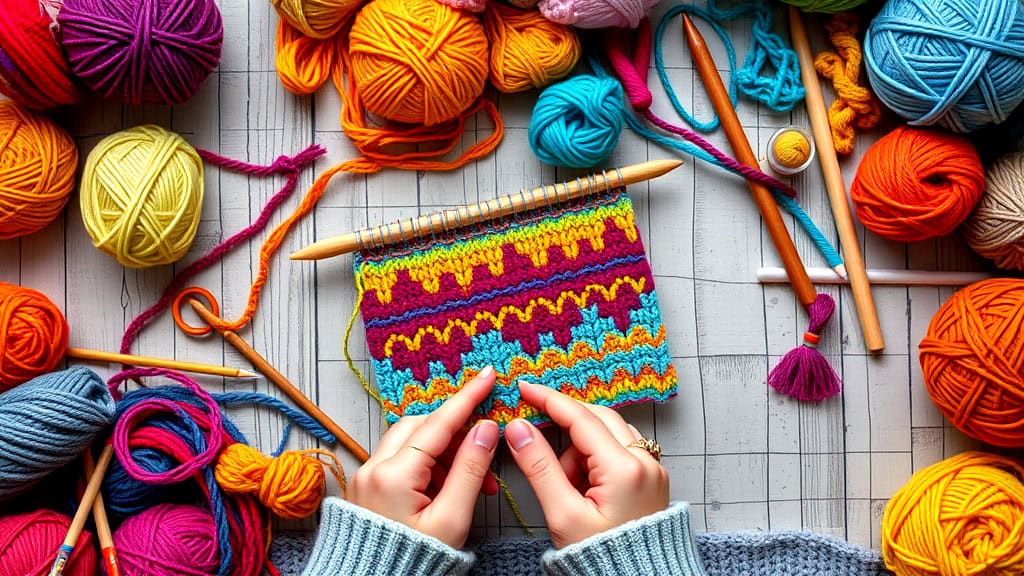
Conclusion
Slip stitch knitting opens up a world of texture and color with just a flick of your needles. Choosing the right yarn and colors isn’t rocket science but think of it as your canvas. Solid and variegated yarns are your best pals here. Just make sure they get along in terms of weight. And remember, the lighter the main color, the more your stitches will pop!
Slipping a stitch is like skipping a step but in a good way. Always slip purlwise to keep things smooth. Where you keep your yarn matters too. Back or front, each has its own magic trick, elongating stitches or creating neat bars across your work. Keep your needles in check with your yarn weight to avoid any bumpy surprises.
Diving into patterns can feel like deciphering ancient runes at times. But fear not. It’s all about getting comfy with the lingo. “SL” and “wyib” will soon feel like old friends. Charts are your road maps here, guiding you through the colorful twists and turns. And for those moments of doubt? Swatch it out. It’s your knitting lab experiment without the cleanup.
For beginners, slip stitch knitting is not just about following the rules. It’s about making them work for you. Start simple, play with colors, and don’t sweat the small stuff. Tension troubles? They’re just bumps on the road to your masterpiece. Each stitch is a step on a path leading to your very own handcrafted creation. So, grab your needles, pick your palette, and let the dance of the slip stitches begin. Happy knitting!
FAQ
- What yarn is best for slip stitch knitting? Solid and variegated yarns work great, especially when they have similar weights. The rule of thumb is to mix it up but keep an eye on the fabric’s texture.
- How do I slip a stitch without messing it up? Slip stitches purlwise to avoid twisting them. Whether you hold the yarn in front or back depends on the effect you want. Back for length, front for bars.
- Can I really use any color for my projects? Yes and no. You can, but choosing a lighter main color compared to the secondary makes your stitches pop. It’s like magic how a little contrast can go a long way.
- Charts or written instructions, which are easier? It’s like asking if pizza is better than burgers! Charts help you visualize patterns, especially for complex designs. But starting with written instructions is okay too. Find what tickles your knitting brain.
- Any tips for a slip stitch knitting newbie? Oh, where to start? Pick two colors that stand out against each other. Make lots of swatches – they’re the sneak peeks of how your project will turn out. And really, don’t sweat the small stuff. Yarn tension can be a party pooper, but you’ll get the hang of it.

